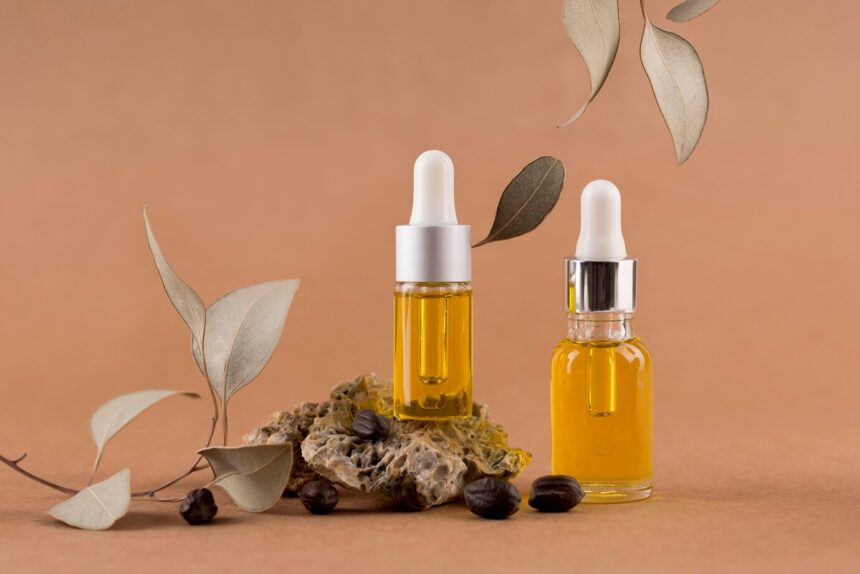Essential oils have gained popularity for their unique benefits and diverse uses. These concentrated plant extracts can enhance well-being through aromatherapy and topical applications. People are drawn to essential oil not only for their pleasant scents but also for their potential to improve mood and promote relaxation.

Different types of essential oils are derived from various plants using methods like steam distillation and cold pressing. Each oil carries its own distinct properties, making them suitable for a range of therapeutic applications. They can aid in stress relief, boost energy, and support overall health when used correctly.
With the right information, anyone can safely enjoy the advantages of essential oils. Understanding their types and potential benefits is key to incorporating them into daily life effectively.
Key Takeaways
- Essential oils are concentrated plant extracts with health benefits.
- Various extraction methods determine the quality and type of oil.
- Proper knowledge enhances the safe use of oils for well-being.
Types and Extraction of Essential Oils
Essential oils can be extracted using different methods, each affecting the oil’s quality and aroma. The following are key methods used to obtain essential oils, showcasing their unique characteristics and processes.
Distillation Methods
Distillation is the most common method for extracting essential oils. It typically involves steam distillation, where steam passes through plant materials, vaporizing the oil. The steam carries the vapor to a condenser, where it cools and turns back into liquid, separating the essential oil from water.
This method works well for a variety of plants, including flowers, leaves, and roots. It preserves the oil’s aroma and therapeutic properties. Steam distillation is preferred for its efficiency and ability to maintain the integrity of the oil.
Expression Techniques
Expression techniques are mainly used for citrus fruits. This method involves mechanically pressing the peel of a fruit to release the oil. The oils are then collected from the surface.
This method preserves the natural scent and flavor of the fruit. Commonly extracted oils include orange, lemon, and grapefruit. Expression is a gentle method that does not use heat, helping to retain the essential oil’s quality.
Solvent Extraction
Solvent extraction is used for delicate flowers and plants that do not withstand high temperatures. This method uses solvents like hexane or ethanol to dissolve the oil from the plant material. After extraction, the solvent is removed, leaving behind the concentrated oil.
This method captures a wide range of aromatic compounds, making it ideal for flowers like jasmine and rose. It creates a substance called an “absolute,” which is more concentrated than typical essential oils. Care must be taken to use safe solvents to ensure the quality of the final product.
Supercritical CO2 Extraction
Supercritical CO2 extraction uses carbon dioxide in a supercritical state, where it acts as both liquid and gas. This method requires specialized equipment and maintains low temperatures, preserving the integrity of the essential oil.
The process involves pressurizing CO2, which then extracts oils from the plant. After the process, the pressure is released, and the CO2 evaporates, leaving behind the pure essential oil. This extraction method can capture more aromatic compounds and is favored for creating high-quality oils. It is safe and eco-friendly, making it a popular choice among producers.
Therapeutic Uses and Benefits
Essential oils offer a range of therapeutic uses and benefits. Their applications can improve mental well-being, enhance skin health, and, when used carefully, can be ingested for added effects. Each method has its own considerations and advantages.
Aromatherapy and Psychological Effects
Aromatherapy utilizes essential oils to promote emotional health. Scents from oils like lavender and lemon play a significant role in reducing anxiety, stress, and symptoms of depression.
When inhaled, the molecules from essential oils travel to the brain’s emotional center, the amygdala. This connection suggests that specific scents can trigger positive emotional responses.
In a study, lemon oil was shown to reduce both pain and nausea. Other oils like peppermint may help boost concentration and mental clarity. This method can be an effective tool for mental wellness.
Topical Applications and Skin Care
Essential oils are also widely recognized for their topical benefits. They can promote healthier skin when diluted properly with a carrier oil. For instance, tea tree oil is known for its antibacterial properties.
This oil can help treat acne and other skin issues. Lavender oil can ease inflammation and soothe irritated skin.
Applying oils can also enhance relaxation through massages. It is important to conduct a patch test to check for any skin sensitivity before full application.
Internal Use and Safety Considerations
Some essential oils can be taken internally, but caution is essential. Not all oils are safe for ingestion. For example, peppermint oil is often used to aid digestion.
Using essential oils internally should always be done under the guidance of a healthcare professional.
It is crucial to choose therapeutic-grade oils that meet safety standards. Proper dosage is vital to avoid adverse effects. Mixing essential oils with food or beverages can be effective, but knowledge of the specific oil’s properties is necessary for safety.






